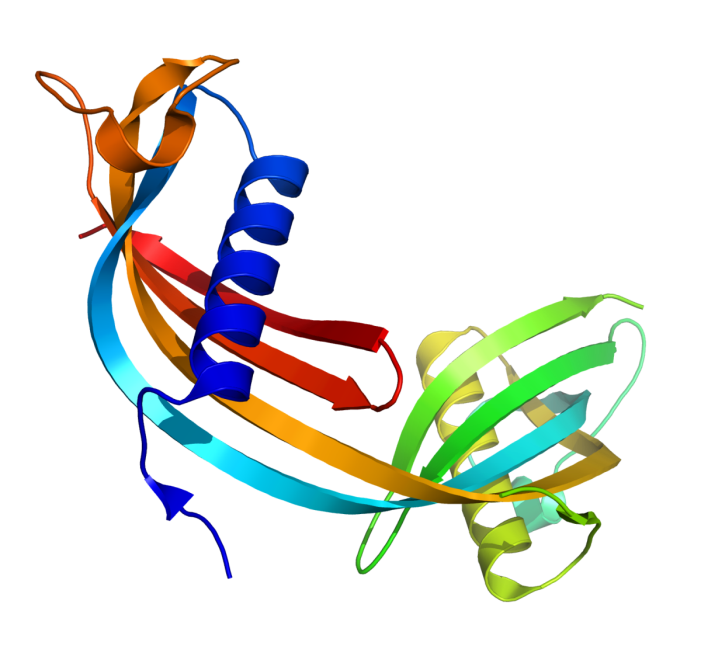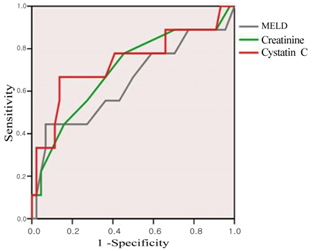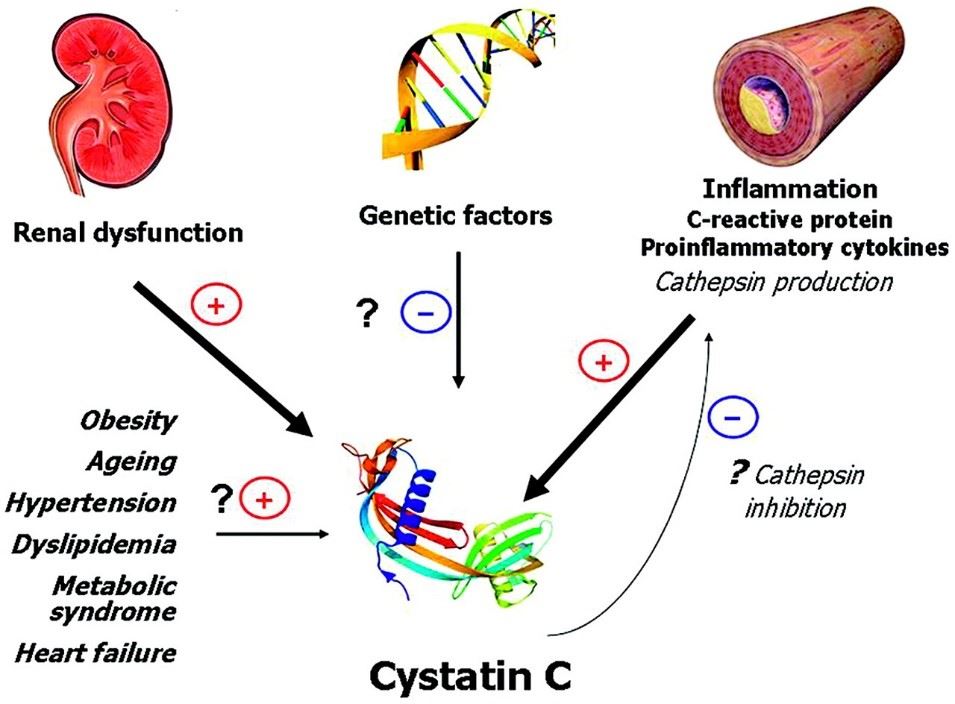Creative Biolabs is a world-leading service provider of application-specific antibody development. Here, we introduce our in vitro diagnostic (IVD) antibody development and immunoassay development services targeting the Cystatin C marker. We are confident that our commitment to science and research will enable us to offer you the best products and services.
Cystatin C
Cystatin C or cystatin 3 (formerly gamma trace, post-gamma-globulin, or neuroendocrine basic polypeptide), a protein encoded by the CST3 gene, is mainly used as a biomarker of kidney function. Recently, it has been studied for its role in predicting new-onset or deteriorating cardiovascular disease. It also seems to play a role in brain disorders involving amyloid (a specific type of protein deposition), such as Alzheimer's disease. In humans, all cells with a nucleus (cell core containing the DNA) produce cystatin C as a chain of 120 amino acids. It is found in virtually all tissues and body fluids. It is a potent inhibitor of lysosomal proteinases (enzymes from a special subunit of the cell that break down proteins) and probably one of the most important extracellular inhibitors of cysteine proteases (it prevents the breakdown of proteins outside the cell by a specific type of protein-degrading enzymes). Cystatin C belongs to the type 2 cystatin gene family.
 Fig.1 The structures of Cystatin C.
Fig.1 The structures of Cystatin C.
Cystatin C Marker of Acute Kidney Injury (AKI)
It has been proved that the cystatin C levels in the blood are associated with kidney dysfunction. Cystatin C is a relatively small molecular substance whose molecular weight approximately 13.3 kilodaltons. It is found in a variety of body fluids, including the blood. The cystatin C can be removed from the bloodstream by glomerular filtration in the kidneys. If kidney function and glomerular filtration rate decline, cystatin C levels in the blood is increased. So the cystatin C levels in serum are the effective marker to predict the risk of kidney dysfunction. Because cystatin C levels are less dependent on age, sex, race and muscle mass compared to creatinine, so serum levels of cystatin C are a more precise test of kidney function than serum creatinine levels. Moreover, a lot of studies have been shown that cystatin-C can be considered an early biomarker of AKI, thus improving the risk prediction and treatment monitoring for AKI.
 Fig.2 ROC curves for serum cystatin C, creatinine, and MELD score for predicting the development of acute kidney injury within 3 months. (Chung M Y., 2010)
Fig.2 ROC curves for serum cystatin C, creatinine, and MELD score for predicting the development of acute kidney injury within 3 months. (Chung M Y., 2010)
Cystatin C Marker of Heart Failure
Heart Failure (HF), as one type of cardiovascular disease, occurs when the heart cannot maintain the blood flow to meet the body’s needs. The recent studies have shown that cystatin C is a great biomarker for HF as patients with chronic kidney disease (CKD) always have increased risks for cardiovascular disease. There are two reasons why cystatin C concentration can be served as the independent risk factor for HF. Firstly, cystatin C might be a marker of the duration and severity of other established HF risk factors. Secondly, the high level of concentration of cystatin C can be associated with other nonconventional HF risk factors.
Cystatin C Marker of Acute Renal Failure
Acute renal failure (ARF) is the clinical syndrome of various systemic complications which are caused by a sudden decreasing of glomerular filtration rate (GFR). ARF results in the nitrogenous waste to be stored in the body and balance disorders of water, electrolytes, and acid-base. In clinical practice, the detection of ARF is always characterized by a strong decrease of the GFR. The small molecular weight of cystatin C permits it free filter through the normal glomerular membrane and as a marker of GFR to detect the patients with ARF. Compared with the traditional marker serum creatinine, cystatin C has been served as a better marker of ARF with a series of advantages including easier measurement and higher diagnostic value. Above all, cystatin C is a high-efficient detection marker of AFR even one or two days earlier than creatinine.
 Fig.3 Proposed mechanisms linking renal dysfunction, inflammation, atherogenesis, and cardiovascular events.
Fig.3 Proposed mechanisms linking renal dysfunction, inflammation, atherogenesis, and cardiovascular events.
IVD Antibody Development Services Targeting Cystatin C Marker
IVD antibodies have been widely used for disease screening and therapeutic monitoring. As a research partner with years of experience in high-quality antibody development and production, Creative Biolabs offers one-stop solutions from antigen design to antibody pair screening. Besides, we also offer diagnostic immunoassay development services, including feasibility analysis, assay design, assay protocol establishment, assay optimization, and kit production. Our services can be tailor-designed to adapt to specific project specifications.
If you are interested in our services, please do not hesitate to contact us for more details.
Reference
For Research Use Only.
